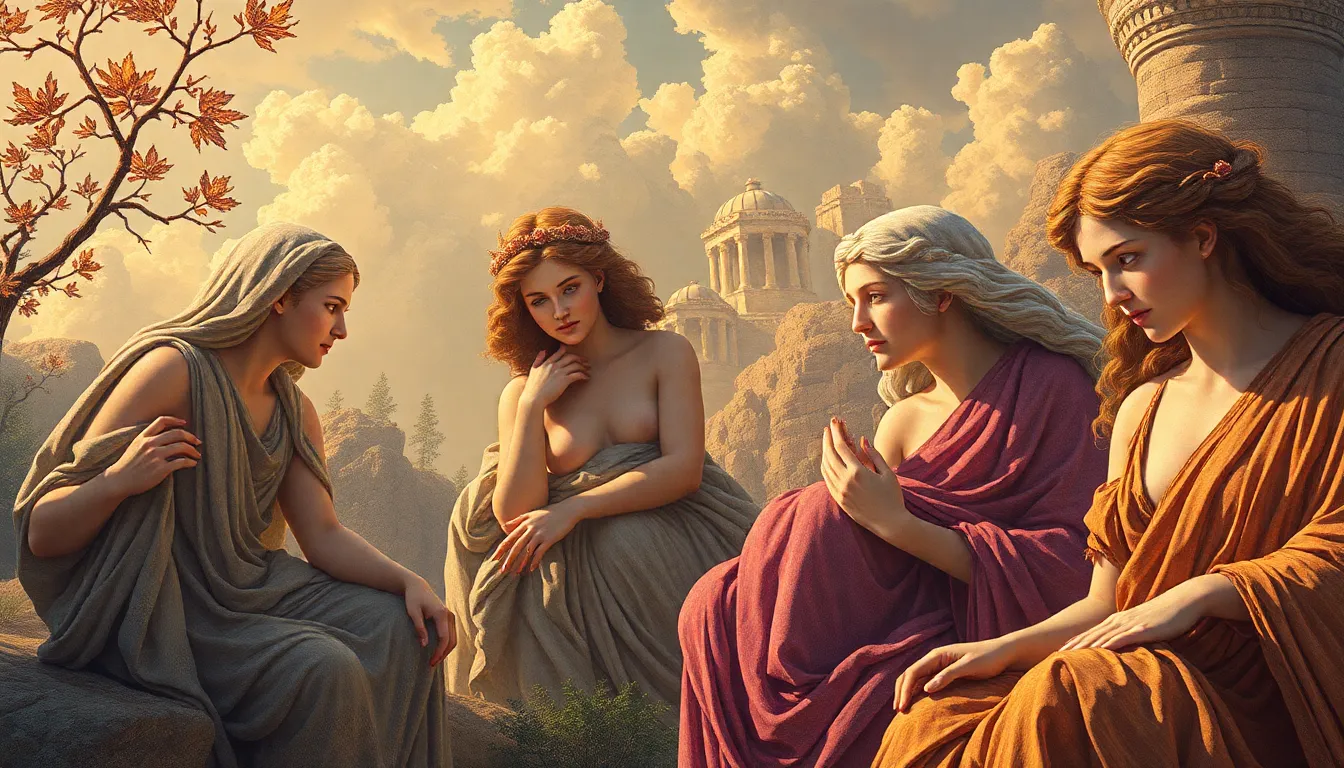How the Muses Have Been Portrayed in Contemporary Literature
I. Introduction
The Muses, the nine goddesses of inspiration in Greek mythology, have long captivated the imagination of artists, writers, and thinkers throughout history. Each Muse presides over a different domain of the arts and sciences, providing the spark of creativity necessary for artistic expression. Their historical significance is not just limited to ancient Greece, but extends into modern literature, where their roles have evolved and transformed.
As we explore the evolution of the concept of Muses, we notice a shift from their classical portrayals to more nuanced representations in contemporary works. This article aims to delve into the various portrayals of the Muses in modern literature, examining how these figures continue to influence and inspire creativity across different genres.
II. The Role of the Muses in Classical Literature
In ancient texts, the Muses were often invoked at the beginning of literary works as a plea for inspiration. For instance, Homer begins his epics by calling upon the Muse to aid him in his storytelling. The Muses were viewed as divine sources of knowledge and creativity, each specializing in different artistic fields:
- Calliope: Epic poetry
- Clio: History
- Erato: Lyric poetry
- Euterpe: Music
- Melpomene: Tragedy
- Polyhymnia: Sacred poetry
- Terpsichore: Dance
- Thalia: Comedy
- Urania: Astronomy
The influence of these classical portrayals has permeated contemporary interpretations, often serving as a template for characters that inspire or support the protagonists in their creative journeys.
III. The Muses as Archetypes in Modern Narratives
In modern literature, the Muse archetype can be found across various genres, embodying qualities that resonate with the human experience of creativity. The Muses often appear as characters who inspire, challenge, or guide the protagonist. Some notable examples include:
- Virginia Woolf’s: The character of Laura in “Mrs. Dalloway” embodies the Muse’s inspiration for the protagonist’s internal journey.
- Shakespeare:</ In “A Midsummer Night’s Dream,” the character of Titania acts as a Muse, influencing the creative processes of the other characters.
- F. Scott Fitzgerald’s: Daisy Buchanan in “The Great Gatsby” serves as a modern Muse, inspiring Gatsby’s grand dreams and ambitions.
These characters not only inspire creativity but also reflect the complexities and struggles associated with artistic endeavors.
IV. Feminist Interpretations of the Muses
Feminist literature has reimagined the Muses, challenging traditional portrayals and exploring themes of empowerment and autonomy. Female authors have taken the concept of the Muse and turned it on its head, presenting characters that not only inspire but also assert their own narratives. Key examples include:
- Kate Bush: Often regarded as a modern Muse through her music, her lyrics explore the intersection of femininity and creativity.
- Margaret Atwood: In works like “The Handmaid’s Tale,” Atwood critiques the traditional roles of women, providing a new lens through which to view Muses.
These redefined Muses serve as symbols of resistance and empowerment, illustrating the evolving roles of women in literature and society.
V. The Muses in Popular Culture
The influence of the Muses extends beyond literature into popular culture, permeating films, music, and visual arts. Their portrayal in these mediums often reflects contemporary values and societal changes. For example:
- Films: In “Birdman,” the character of Sam acts as a Muse to her father, representing the complexities of inspiration.
- Music: Artists like Adele and Florence Welch often embody Muse-like qualities in their songs, inspiring both listeners and fellow musicians.
- Visual Arts: Many contemporary artists depict Muses in their works, using them as symbols of creativity and inspiration.
This influence highlights how popular culture both shapes and reflects the portrayal of Muses in literature, creating a cyclical relationship between the two.
VI. Psychological Perspectives on the Muses
From a psychological standpoint, the Muses can be seen as representations of creativity and inspiration. The concept of the Muse has been analyzed through various psychological theories, including:
- Freudian Theory: Suggests that the Muse represents the unconscious mind’s drive for creativity.
- Jungian Archetypes: Views the Muses as archetypal figures that resonate with the collective unconscious, embodying the creative spirit.
These perspectives offer insights into the deeper meanings behind the Muses and their roles in fostering creativity, encouraging artists to explore the psychological complexities of inspiration.
VII. Critiques of Muse Representation in Contemporary Literature
Despite the rich portrayals of Muses in contemporary literature, critiques have emerged regarding the representation of these figures. Common issues include:
- Stereotyping: Muses are often depicted as one-dimensional characters whose sole purpose is to inspire male protagonists.
- Limitations: The traditional portrayal of Muses can reinforce outdated gender roles and expectations.
However, many authors are actively challenging these traditional portrayals. Voices of dissent are emerging, creating more complex, multifaceted characters that reflect the realities of contemporary life.
VIII. Conclusion
In summary, the portrayal of the Muses in contemporary literature has evolved significantly from their classical origins. They are no longer merely figures of inspiration but complex characters that embody the struggles and triumphs of creativity. The ongoing relevance of the Muses in literature speaks to their enduring power to inspire and provoke thought.
As we look to the future, there is a call for further exploration and innovative portrayals of the Muses in literature. By reimagining these figures, writers can continue to reflect the complexities of the creative process and the rich tapestry of human experience.




